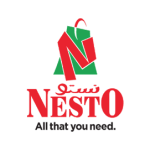Transforming Shopping Experiences: The Impact of Electronic Shelf Labels on the Fashion and Retail Sector
The fashion and retail industry has always been, at the forefront of embracing technologies to enhance the customer experience. One such innovation that has made an impact is the use of Electronic Shelf Labels (ESLs). These digital price tags have not changed how products are priced and labeled. Have also revolutionized the shopping experience for consumers. In this blog post we will explore the impact of Electronic Shelf Labels on the fashion and retail sector from improving efficiency to enhancing customer engagement.
Simplifying Pricing and Inventory Management;
In the paced world of fashion and retail, accurate and up to date pricing is crucial. ESLs have transformed how pricing is managed. By being able to update prices in time across all store locations retailers can ensure pricing without relying on manual adjustments. This streamlined approach reduces pricing errors eliminates discrepancies between, in store prices and ultimately builds customer trust.
Additionally, ESLs enable retailers to manage inventory more efficiently. As products are purchased, inventory data is updated in real-time, ensuring that shelves are stocked appropriately and reducing the likelihood of out-of-stock situations. This level of accuracy enhances the shopping experience by ensuring that customers can find the products they desire when they visit the store.
Dynamic Pricing and Promotions
ESLs empower retailers to implement dynamic pricing strategies in the fashion sector. Prices can be adjusted based on factors such as demand, time of day, or even competitor pricing. This flexibility allows retailers to stay competitive while maximizing revenue potential. Moreover, ESLs enable the seamless implementation of promotions and discounts, enhancing customer engagement and driving sales.
Personalized Shopping Experience:
Fashion retailers are leveraging ESLs to provide a personalized shopping experience for customers. These digital labels can display more than just prices; they can showcase product details, reviews, sizing options, and even QR codes for easy access to additional information. This interactive approach allows customers to make informed purchasing decisions and enhances their overall shopping journey.
Operational Efficiency and Sustainability:
ESLs significantly reduce the operational burden associated with manual price changes. Retail staff can now focus on more value-added tasks, and the likelihood of pricing errors is greatly minimized. This operational efficiency leads to cost savings and a more streamlined workflow.
Furthermore, the adoption of ESLs aligns with sustainability initiatives. The reduction in paper waste from traditional paper price tags supports environmentally friendly practices within the fashion and retail sector.
Data-Driven Insights:
ESLs provide retailers with valuable data insights. By analyzing customer behavior and purchasing patterns, retailers can make informed decisions regarding pricing strategies, inventory management, and even store layout optimization. This data-driven approach enhances decision-making and contributes to a more customer-centric retail environment.
Conclusion:
Electronic Shelf Labels are undeniably transforming the fashion and retail sector. From streamlining pricing and inventory management to enabling dynamic pricing and personalization, ESLs are enhancing the shopping experience for consumers while boosting operational efficiency for retailers. As the fashion industry continues to evolve, ESLs will play an instrumental role in shaping its future, ensuring that customers have seamless and engaging interactions with the products they love. Retailers who embrace this technology are not only staying ahead of the curve but are also redefining the way we shop in the modern world.





